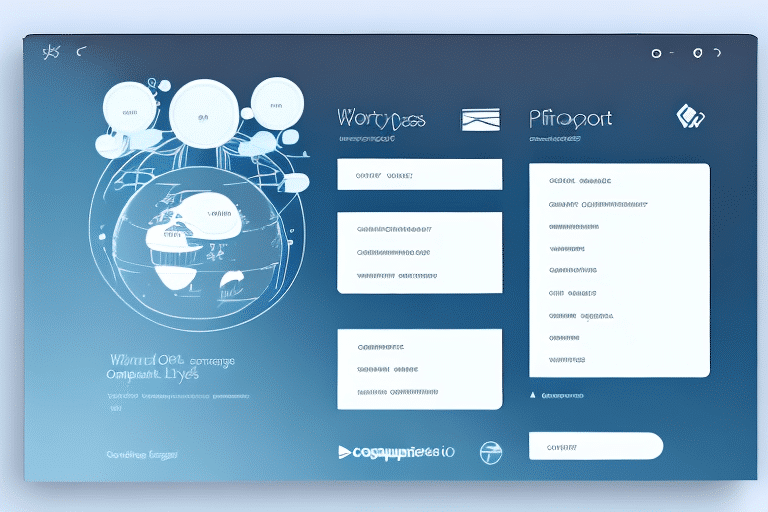Optimizing UPS WorldShip with SPF Settings
Enhancing your shipping operations involves not only efficient logistics but also robust email security. Configuring Sender Policy Framework (SPF) settings in your UPS WorldShip software is a critical step toward preventing email spoofing and phishing attacks. SPF helps verify the authenticity of your emails, ensuring secure and reliable communication with your customers.
Importance of SPF Settings in UPS WorldShip
In today's digital landscape, email is a primary communication channel between businesses and customers. Without proper SPF settings, your emails may be flagged as spam or rejected, leading to missed sales opportunities and diminished customer trust. Implementing SPF in UPS WorldShip ensures that your email domain is protected against unauthorized use, enhancing your business's credibility and delivery success rates.
According to a Cisco report, organizations that implement SPF alongside other email authentication protocols experience a significant reduction in phishing attacks and email fraud incidents.
Understanding and Accessing SPF Settings in UPS WorldShip
What Are SPF Settings?
SPF settings authenticate your email domain by specifying which mail servers are authorized to send emails on behalf of your domain. This authentication process helps prevent malicious actors from sending fraudulent emails that appear to come from your business.
Accessing SPF Settings
To configure SPF settings in UPS WorldShip:
- Open the UPS WorldShip software.
- Navigate to the Edit menu.
- Select Preferences from the dropdown.
- Click on Email in the Preferences window.
- Choose Advanced to access SPF settings.
Once accessed, you can specify authorized IP addresses and manage your SPF records effectively.
Step-by-Step Guide to Configuring SPF Settings
Follow these steps to set up SPF settings in UPS WorldShip:
- Access the SPF settings using the steps outlined above.
- Enter the domain names for which you want to create SPF records.
- Click the Create Record button.
- Input the IP addresses of your authorized email servers.
- Save the changes to update your DNS records.
- Test the configuration by sending authenticated emails to ensure proper setup.
For comprehensive guidance, refer to authoritative sources such as the RFC 7208 documentation.
Customizing and Maintaining Your SPF Settings
Tailoring SPF to Your Business Needs
Depending on your email infrastructure, you may need to customize SPF records to include multiple servers or subdomains. This flexibility ensures that all authorized senders are recognized, maintaining high deliverability rates.
Best Practices for Maintenance
- Regularly review and update your SPF records to reflect changes in your email servers.
- Utilize third-party SPF management tools for streamlined configuration.
- Combine SPF with DKIM and DMARC for a comprehensive email security strategy.
Staying proactive with your SPF maintenance protects your domain from evolving email threats and ensures consistent email performance.
Troubleshooting Common SPF Configuration Issues
While setting up SPF in UPS WorldShip, you might encounter issues such as syntax errors or DNS resolution problems. Here are some troubleshooting tips:
- Verify the syntax of your SPF records to ensure they comply with standards.
- Confirm that all listed IP addresses are accurate and currently in use.
- Ensure your DNS servers are operational and correctly configured.
- Avoid having multiple SPF records for a single domain, as this can cause conflicts.
- Use online SPF validation tools like MXToolbox to validate your SPF setup.
Addressing these common errors promptly helps maintain the integrity of your email communications and prevents potential delivery issues.
Integrating SPF with Other Email Security Measures
While SPF is a vital component of email security, it should be used in conjunction with other protocols like DKIM and DMARC. Integrating these measures provides a robust defense against email spoofing and phishing attacks.
Implementing DKIM adds a digital signature to your emails, verifying the sender's identity. Additionally, DMARC policies enable you to specify how your domain handles failed authentication checks, enhancing overall email security.
Benefits of Configuring SPF Settings in UPS WorldShip
- Enhanced Security: Protects your domain from unauthorized use and email-based threats.
- Improved Deliverability: Increases the likelihood of your emails reaching customers' inboxes.
- Brand Trust: Maintains your business’s credibility by ensuring authentic communication.
- Operational Efficiency: Reduces the risk of email fraud, saving time and resources.
Implementing SPF settings in UPS WorldShip not only secures your email communications but also contributes to more reliable and effective customer interactions.
Frequently Asked Questions About UPS WorldShip SPF Settings
Q: Do I need to set up SPF settings if I am already using other email authentication methods?
A: Yes, it is recommended to use SPF alongside other authentication protocols like DKIM and DMARC to provide comprehensive email security.
Q: Can I set up SPF settings for multiple domains?
A: Absolutely. You can create SPF records for each of your email domains by following the configuration steps outlined above.
Q: What happens if an email is not authorized by the SPF record?
A: Unauthorized emails may be rejected or marked as spam, affecting delivery rates and the effectiveness of your email communications.
By effectively configuring and maintaining SPF settings in UPS WorldShip, you can safeguard your business’s email communications, ensuring secure and reliable interactions with your customers.




















